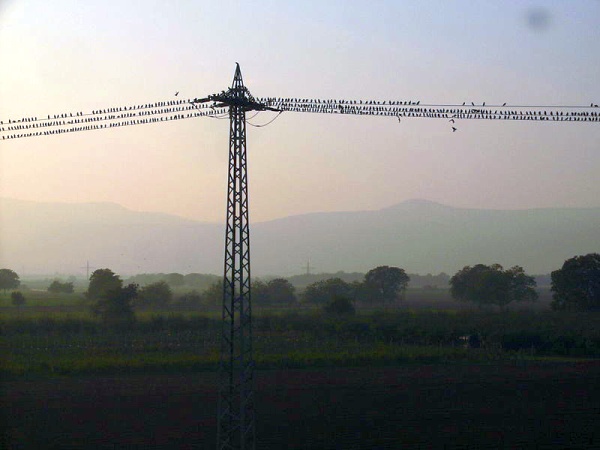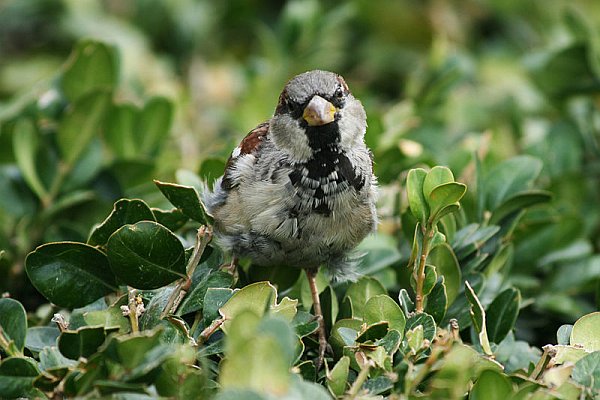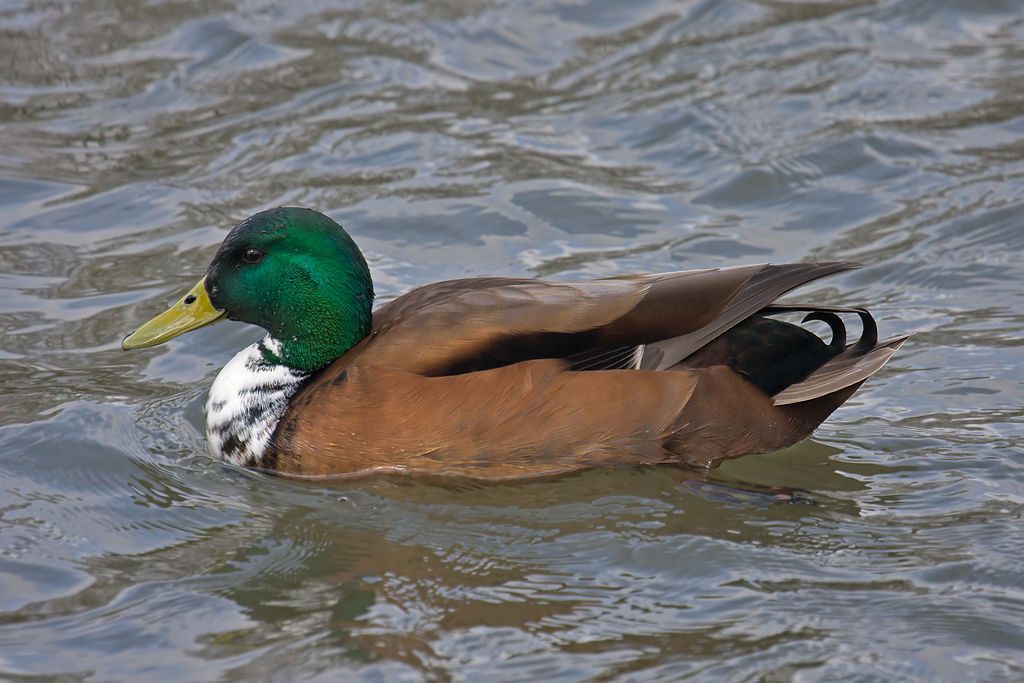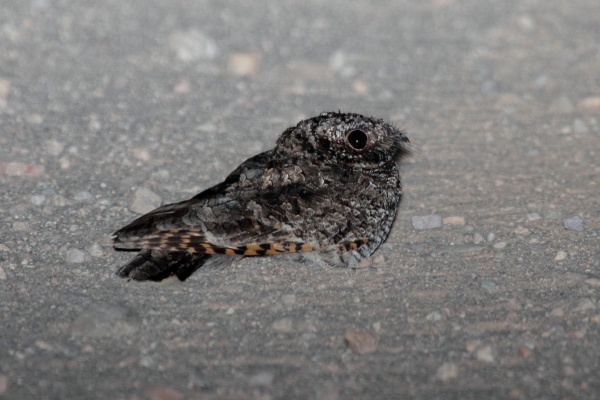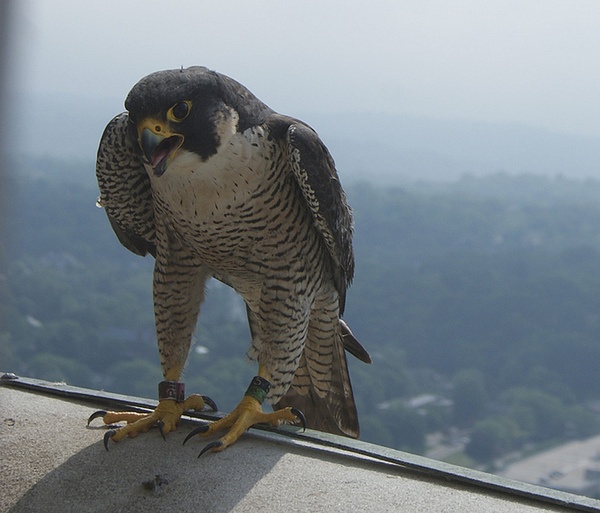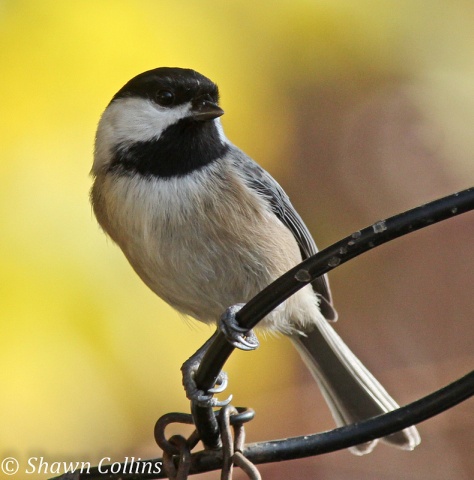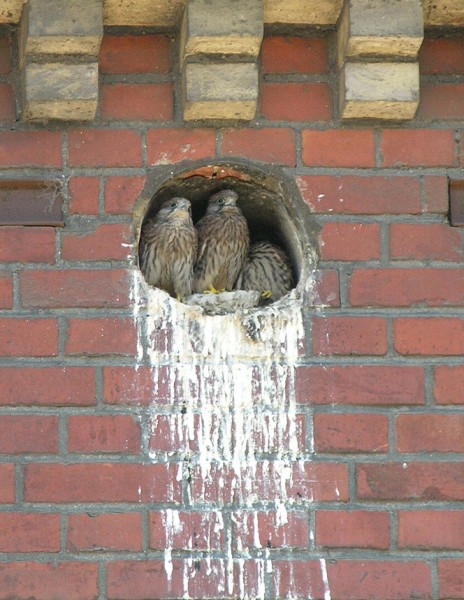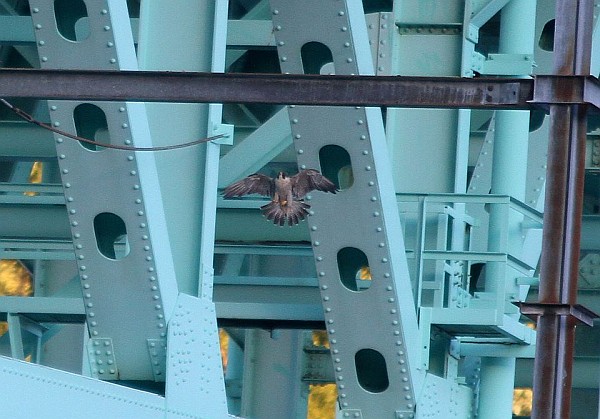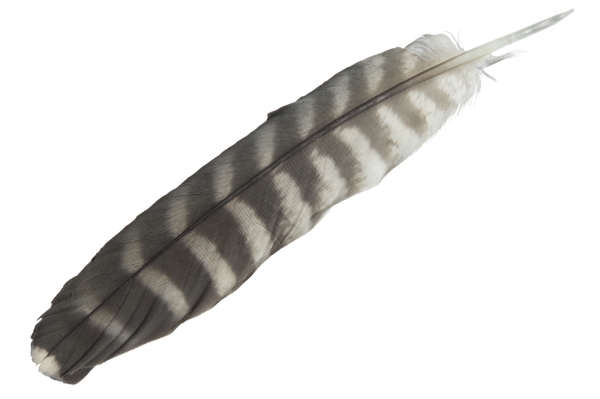Early this month Beth Lawry asked about the noisy flocks of songbirds now congregating in the Pittsburgh area. She wrote, “I am seeing strings of them along the signs on the Parkway –- sometimes 50+.” And on the wires.
These are flocks of European starlings (Sturnus vulgaris), some of the 200 million descendants of 100 starlings introduced in Central Park, New York in 1890-91.
Flocking has helped them survive and thrive in North America. In flocks they have:
- Better foraging success: Individual starlings get more to eat when they can see their flock mates eating (Fernandez-Juricic, 2005). They watch each other as they methodically walk across my yard eating grubs.
- Reduced predation: In flocks they have statistical safety in numbers, more look-out birds to warn of danger, and the ability to hide within the flock when they’re under attack as shown in this video of starlings evading a peregrine falcon in Torino, Italy.
- Thermoregulation at the roost: Starlings hang out with each other all day and then gather into huge roosts at night where they huddle to stay warm. At very large roosts they swarm at dusk, as seen in this amazing video from Ireland.
And they are noisy. They mimic other birds (poorly) and make wiry sounds and wolf whistles. Click here to hear.
The starling flocks we see this month are only a hint at what we’ll see by the end of the year. More starlings are on their way. Those who live in the northern part of their range fly south for the winter. Those who live south of 40oN latitude do not.
Guess where Pittsburgh is. 40oN. We’re probably a starling hotspot because our local birds stay put and the northern crowd joins them.
By the end of December we usually have 6,000 starlings(*).
Thousands of birds on the wires.
(photo from Wikimedia Commons. Click on the image to see the original. Today’s Tenth Page is inspired by page 320 of Ornithology by Frank B. Gill.)
(*) average of Pittsburgh and Pittsburgh-South CBC counts, 2001 through 2011.
